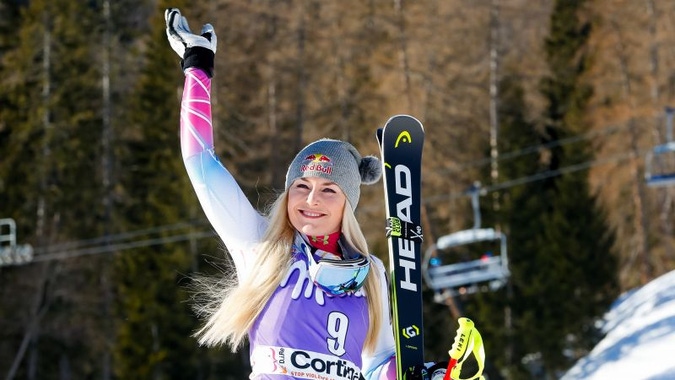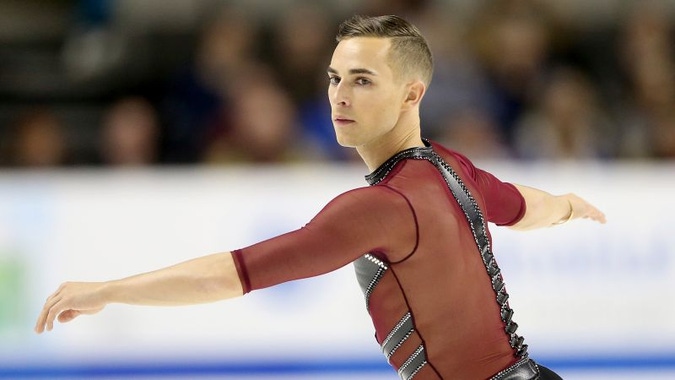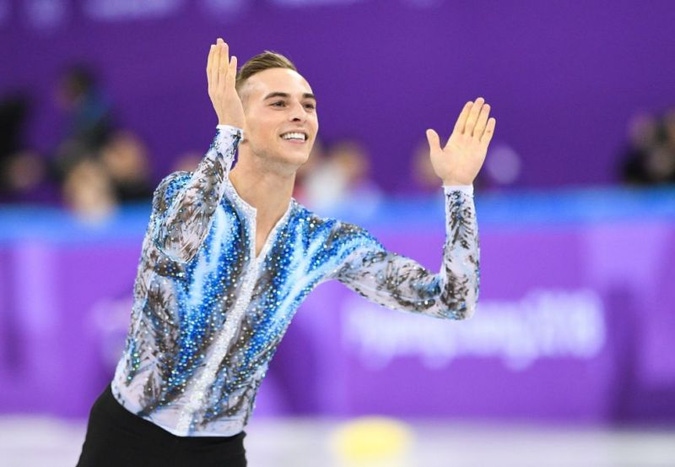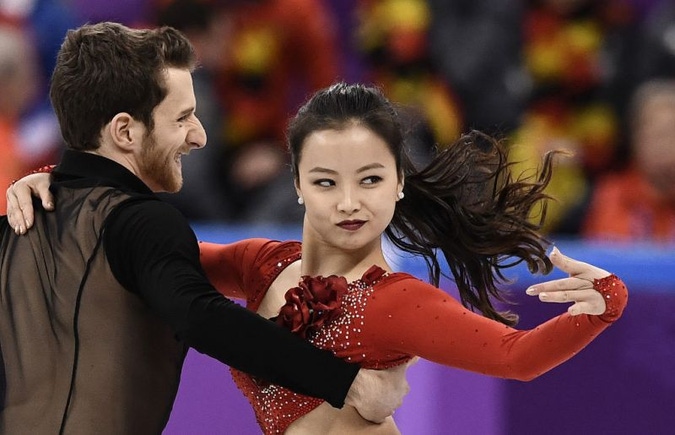The Inspiring Stories of These Trailblazing, Triumphant U.S. Olympic Athletes Will Warm Your Heart
These athletes haven’t let anything get in the way of participating in this year’s games, from injuries to their very identities.

Opinions expressed by Entrepreneur contributors are their own.
This article originally published Jan. 25, 2018.
Throughout the past few weeks, more and more athletes have earned their spots on Team USA for the 2018 Winter Olympic Games in PyeongChang, South Korea.
They’ve had to overcome serious injuries, past disappointments and even discrimination to qualify for the games. Some are rookies, while others will participate for their second or even their fourth time. Some had to sit out Sochi four years ago, while others set records there and aim to top their past performance.
Related: The Most Inspirational Moments From the 2016 Olympics
Click through the slides to learn about the careers and driving philosophies of five of the athletes that will compete for the U.S. in PyeongChang between Feb. 9 and 25.
Be patient and persevere.
Alpine skier Lindsey Vonn sat out the 2014 Sochi Winter Olympics with a knee injury, and she ended three of her past five seasons prematurely due to crashes. She’s even crashed a few times so far this season and suffered a back injury.
Now in 2018, the 33-year-old, who is the most successful female skier in history, is headed to PyeongChang after an eight-year Olympic hiatus. Earlier this month, Vonn secured her 79th World Cup victory and qualified to compete in her fourth Olympic Games.
Vonn won a gold medal in downhill skiing and bronze in the super-G category at the Vancouver Winter Olympics in 2010. According to the Team USA website, 2018 will likely be Vonn’s final Olympics.
“I guess I’m not a washed-up old hag,” Vonn said upon qualifying for this year’s games, according to the U.S Ski Team. “I think I proved myself, and karma definitely comes back around. I’ve got some good karma coming my way.”
Defy stereotypes.
Twenty-year-old Jordan Greenway will be the first African-American to represent Team USA in hockey at the PyeongChang Olympics.
Greenway is a forward for the Boston University hockey team and was a 2015 second-round draft pick for the Minnesota Wild. The NHL won’t send players to the Olympics this year, and Greenway is one of four college-age players who will play for the U.S.
“Even starting in 1960 when we had the amateurs playing in the Olympics and we were able to get the gold medal there, and then most recently in 1980, just being able to build on that legacy is an unbelievable feeling for me, and I’m happy I’m able to get this opportunity now,” Greenway told the Sporting News. “I’ve been able to accomplish a lot of good things and just allowing a lot of African-American kids who are younger than me who see kind of what I’m doing, I hope that can be an inspiration for them.
“Go out and do something different against the typical stereotypes that most African-Americans play basketball,” Greenway added, “or whatever the case is.”
Don’t rule out a pivot.
A rainy day changed the course of figure skater Mirai Nagasu’s life. By the time she was 5 years old, her parents had decided to guide her to become a professional golfer, taking her to the golf course to practice daily. When the weather didn’t cooperate one day, Nagasu’s parents took her to a skating rink instead.
“After that I kept asking to be taken to the skating rink,” Nagasu, now 24, said in a Q&A on her website. “My parents always tell me that they never would have let me start if they had known how expensive and difficult figure skating is.”
Related: 12 Amazing Tech Innovations Seen at the Rio Olympics
Nagasu competed in the 2010 Winter Olympics, but the selection committee passed over her in 2014 despite the fact that she placed third in the national championships (they picked fourth-place winner Ashley Wagner instead). On Jan. 5, she secured a spot on Team USA for this year’s Olympics. This achievement followed another major milestone earlier this season, when Nagasu became the first American female figure skater since Tonya Harding in 1991 to land a triple axel jump in an international competition.
Get ‘addicted to fear.’
Despite the fact that her sport requires her to fly through the air, 24-year-old freestyle skier Maddie Bowman says she stays calm and channels any fear she feels into empowerment.
“I always feel that with fear, you’re afraid before you do it,” Bowman told SI.com. “But then once you’re doing it and you finish whatever you set out to do, you feel so good and you get that high. I think I’m addicted to that, and I think that fear kind of comes along with it.”
In Sochi in 2014, Bowman became the first Olympic gold medalist in women’s halfpipe skiing, when the sport debuted at the games. She tore her ACL in 2015 and has since recovered. At X Games Aspen in 2016, she became the first woman to land a switch 900 in a ski halfpipe competition. And on Jan. 12, she qualified for PyeongChang.
Be yourself for the sake of others.
Adam Rippon became the first openly gay American man to qualify for the Winter Olympics on Jan. 7.
The 28-year-old figure skater placed fourth at the U.S. figure skating championships, but the selection committee chose him based on his body of work over the past two seasons.
“I don’t really care what other people think of me. I’m able to go out there and I’m really able to be unabashedly myself,” Rippon said on NPR‘s All Things Considered. “I want somebody who’s young, who’s struggling, who’s not sure if it’s OK if they are themselves to know that it’s OK.”
It’s been 82 years since an American man has made an Olympic skating debut at Rippon’s age.
Openly gay skier Gus Kenworthy competed in Sochi in 2014, came out in 2015 and qualified for the PyeongChang Olympics on Jan. 21.
Be resourceful.
Figure skater Adam Rippon has shared jokes, political comments and inspirational messages via Twitter over the last few weeks as the Olympic spotlight has turned toward him.
He told one story about how he made ends meet as an aspiring Olympian chasing his dream, living in his coach’s basement, spending all of his extra money on a gym membership and subsisting on the free snacks the facility provided.
A little over 5 years ago, I moved to California. I was broke AF, to the point where the little money I did have, I used to join the gym. I would steal all the apples they had out for all the gym members because sometimes I wouldn’t have enough $$$ for groceries.
— Adam Rippon (@Adaripp) February 3, 2018
Know that the show must go on.
Not everyone keeps calm and collected under pressure, let alone when something goes wrong on top of that pressure. But when figure skater Yura Min’s outfit came unhooked in PyeongChang on Feb. 11, she straightened her posture, adapted her choreography and kept skating. She paused only briefly to adjust the garment, then continued dancing.
“I was like, “Oh no! If that comes undone, the whole thing could just pop off,'” Min told USA Today. “I was terrified the entire program.”
Despite the incident, Min finished the routine.
Despite the wardrobe malfunction, I had an amazing time competing in my home country! I promise to sew myself in for the individual event. ? I would like to thank the audience for keeping us going until the end. Couldn’t have done it without you guys ? #grateful pic.twitter.com/B8UuRNgRMu
— Yura Min (???) (@Yuraxmin) February 11, 2018
Min was not the only skater to experience a wardrobe malfunction at this year’s games. On Feb. 19, French ice dancer Gabriella Papadakis was just beginning a performance with her partner, Guillaume Cizeron, when her dress pulled apart, exposing her left breast.
Papadakis adjusted her movements but finished the routine, and the duo earned a score of 81.93, putting them in second place.
? “My worst nightmare happened at the Olympics. I felt it right away and I prayed, that’s all I could do.” @GabriellaPks
— ISU Figure Skating (@ISU_Figure) February 19, 2018
#? #FigureSkating #PyeongChang2018 pic.twitter.com/PxJm04vl6t
Make the best of what you’ve got.
Besnik Sokoli is the superintendent of a building in Brooklyn’s Dumbo neighborhood. He came to the U.S. as a refugee from Kosovo during his teen years, but he’s representing his home country at the Olympics this year.
“I had no idea where I was going,” Sokoli told NBC 4 New York of his flee from Kosovo. “I just hopped on a plane. I didn’t even know I was coming to America. I just knew I was leaving behind the snipers, the landmines, the robbing and the killing.”
The 36-year-old has been training on a ski training machine in the boiler room of the building he maintains, and he’s serving as an alternate this year in PyeongChang for Kosovo’s alpine ski team — although he took up skiing just over a year ago, during a trip to the Poconos.
In crowded New York City, the boiler room is the only place he could find to train.
“I can focus on my training at all times,” Sokoli said of the space.
Make it look effortless.
Seventeen-year-old snowboarder Chloe Kim won a gold medal for the women’s halfpipe competition in PyeongChang, scoring a whopping 98.25 points.
But if you followed along on Twitter during the events, you might have thought Kim was a bit distracted. She was tweeting about being hungry — for ice cream, as well as the breakfast sandwich she hadn’t been able to finish — during the competition.
Wish I finished my breakfast sandwich but my stubborn self decided not to and now I’m getting hangry
— Chloe Kim (@chloekimsnow) February 13, 2018
Previously, she tweeted that she was nervous and had eaten some churros. Apparently, the sweet snacks calmed her nerves.
Oh and I also had 2 churros today and they were pretty bomb so if you ever get nervous go eat a churro
— Chloe Kim (@chloekimsnow) February 11, 2018
She has a point https://t.co/R86uaVhKzO
— jack (@jack) February 13, 2018
Kim is the youngest-ever female Olympian to win a medal in snowboarding. In PyeongChang, she broke the record previously set by Kelly Clark, who was 18 when she won in Salt Lake City in 2002.
Keep your head in the game.
Olympic athletes have more to worry about than just their physical preparation. A high-stakes race or competition requires the utmost mental clarity and calm in order to execute a trick, stick a landing or shoot a target.
American biathlete Clare Egan, who competes in an event that combines skiing and shooting, spoke with The New York Times about how she keeps her cool and manages the stress of performing at the Olympics.
She explained that she scopes out course landmarks ahead of time, so that the shooting phase of the race doesn’t sneak up on her and she can mentally prepare before it’s time to shoot. She also emphasized her breathing technique: Slow breathing (and especially exhaling) induces calm ahead of a challenging task.
Finally, she said she forces herself to focus on nothing but the task at hand and the steps it requires. She doesn’t think about the end, but the means.
“”If I hit this, I’ll win the gold medal’ — as soon as you have that thought, you’re definitely going to miss it,” Egan told the Times.
Show grace in times of disappointment.
Scott Hamilton won a gold medal in figure skating at the Sarajevo Olympics in 1984, and in the decades since, he’s been an NBC analyst for the sport.
This year, the network decided to replace him with up-and-comers Tara Lipinski and Johnny Weir, moving Hamilton, 59, to a show on a secondary channel.
But Hamilton, 59, who has conquered testicular cancer and is currently living with his third brain tumor since 2004, has handled the demotion with grace.
“There was a sadness for about 10 minutes,” Hamilton told The New York Times. “I lamented it being over. I thought, “Oh, man, that was such a beautiful part of my life and now it’s over.’ But change happens to everyone — even me.”
Hamilton says his approach to battling his illness has been to live joyfully, inspired by pep talks from his wife, Tracie. Over his life and career, he’s learned that you have to keep going amid disappointment or difficulty.
“I calculated once how many times I fell during my skating career — 41,600 times,” Hamilton told the Times. “But here’s the funny thing: I got up 41,600 times. That’s the muscle you have to build in your psyche — the one that reminds you to just get up.”
Approach the challenge however you can.
American skier Elizabeth Swaney, 33, always wanted to be in the Olympics, and after training in various sports throughout her youth and college years, she finally took up skiing in 2010.
This year, she qualified for the PyeongChang Olympics on Jan. 24. She competed for Hungary, where her grandparents are from, and she came in last place in the women’s halfpipe competition on Feb. 19, according to The New York Times.
Her freestyle technique was not as sophisticated as her competitors’, and she garnered quite a bit of attention as a result.
“She was able to enter events in which there were 30 or less competitors, and if you earn a top-30 finish in a World Cup event you score points through the International Ski Federation,”CBS Sports reporter Pete Blackburn said on NPR.
Swaney didn’t qualify for one of the United States’s four spots in the women’s ski halfpipe event. Only 24 women can compete worldwide, and only four from each country. Given these rules, Swaney qualified to ski for Hungary. Some analysts and spectators said she gamed the system, despite the fact that more skilled and experience skiers were not eligible to compete because their countries could only take four women.
How freeskier Elizabeth Swaney made it to the #WinterOlympics with this very simple halfpipe run: https://t.co/enfDyoQjGC pic.twitter.com/kHTAV7XND4
— NBC Olympics (@NBCOlympics) February 20, 2018
While Swaney reportedly brushed off the attention she received for her relatively simple style, explaining that the medalists deserved the spotlight, her performance is a lesson in adaptability and putting your best foot forward.
This article originally published Jan. 25, 2018.
Throughout the past few weeks, more and more athletes have earned their spots on Team USA for the 2018 Winter Olympic Games in PyeongChang, South Korea.
They’ve had to overcome serious injuries, past disappointments and even discrimination to qualify for the games. Some are rookies, while others will participate for their second or even their fourth time. Some had to sit out Sochi four years ago, while others set records there and aim to top their past performance.
The rest of this article is locked.
Join Entrepreneur+ today for access.
Already have an account? Sign In
 Christophe Pallot | Getty Images
Christophe Pallot | Getty Images Richard T Gagnon | Getty Images
Richard T Gagnon | Getty Images Matthew Stockman | Getty Images
Matthew Stockman | Getty Images Sean M. Haffey | Getty Images
Sean M. Haffey | Getty Images Matthew Stockman | Getty Images
Matthew Stockman | Getty Images Roberto Schmidt | Getty Images
Roberto Schmidt | Getty Images Aris Messinis | Getty Images
Aris Messinis | Getty Images besnik_sokoli | Instagram
besnik_sokoli | Instagram Ryan Pierse | Getty Images
Ryan Pierse | Getty Images Adam Pretty | Getty Images
Adam Pretty | Getty Images Jean Catuffe | Getty Images
Jean Catuffe | Getty Images Cameron Spencer | Getty Images
Cameron Spencer | Getty Images





